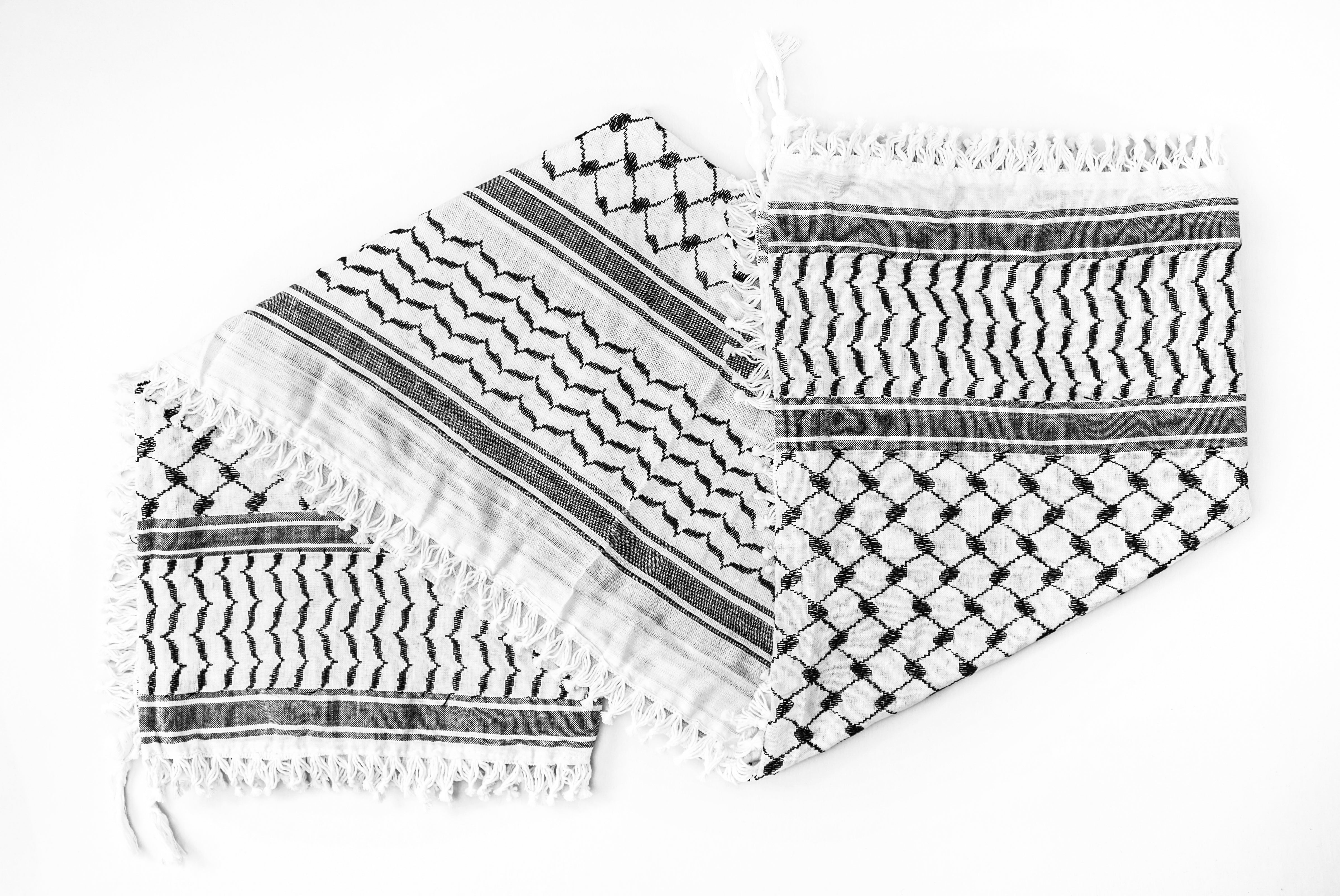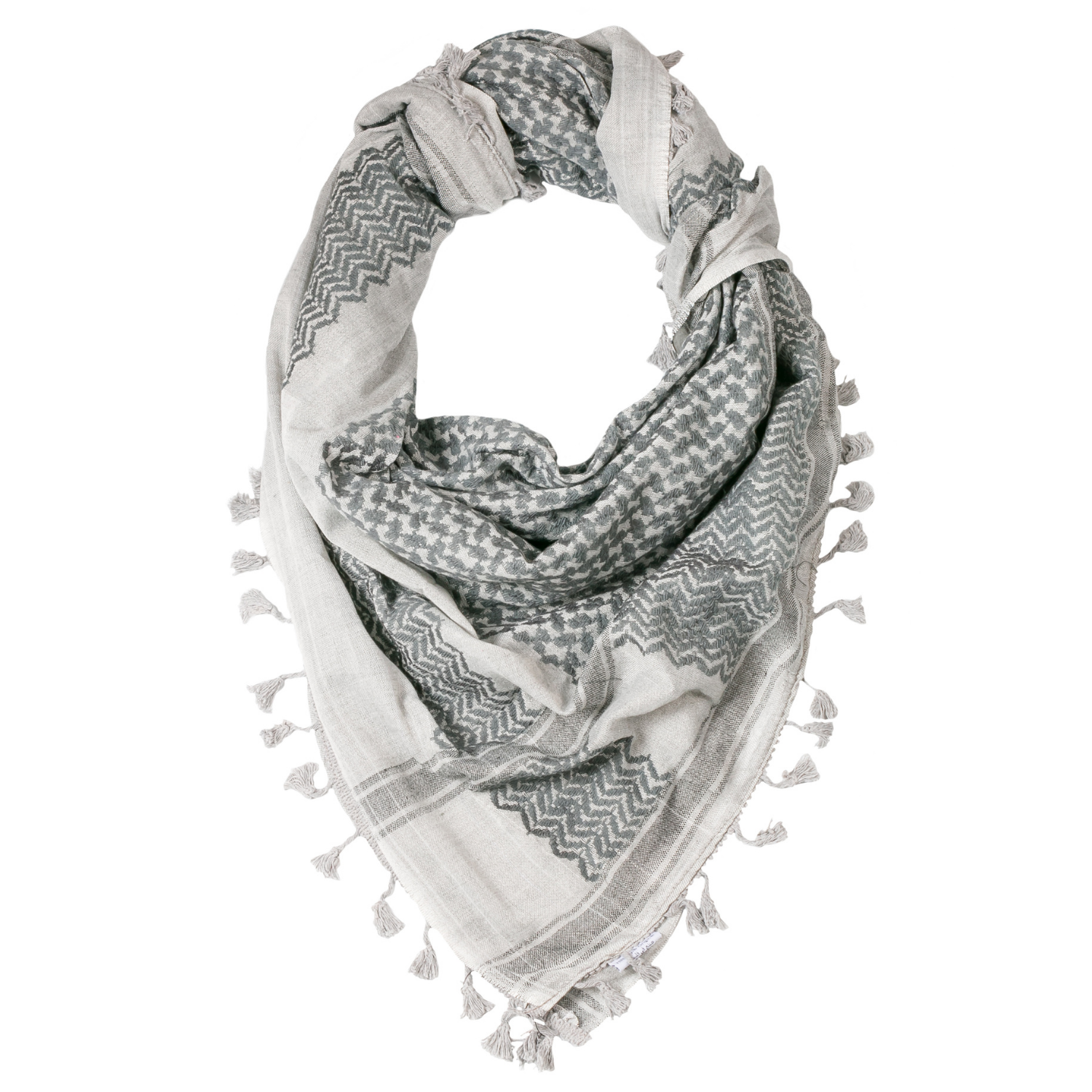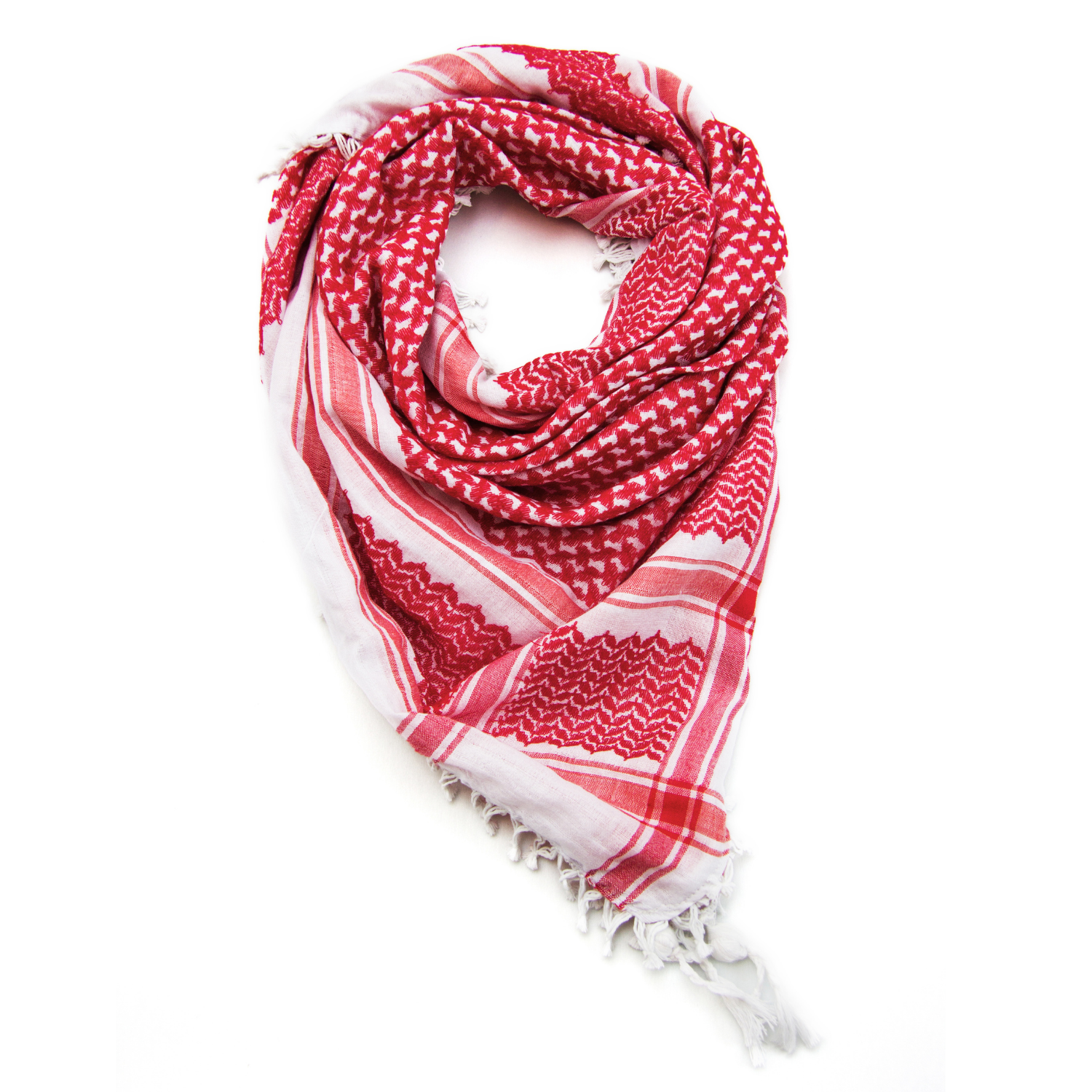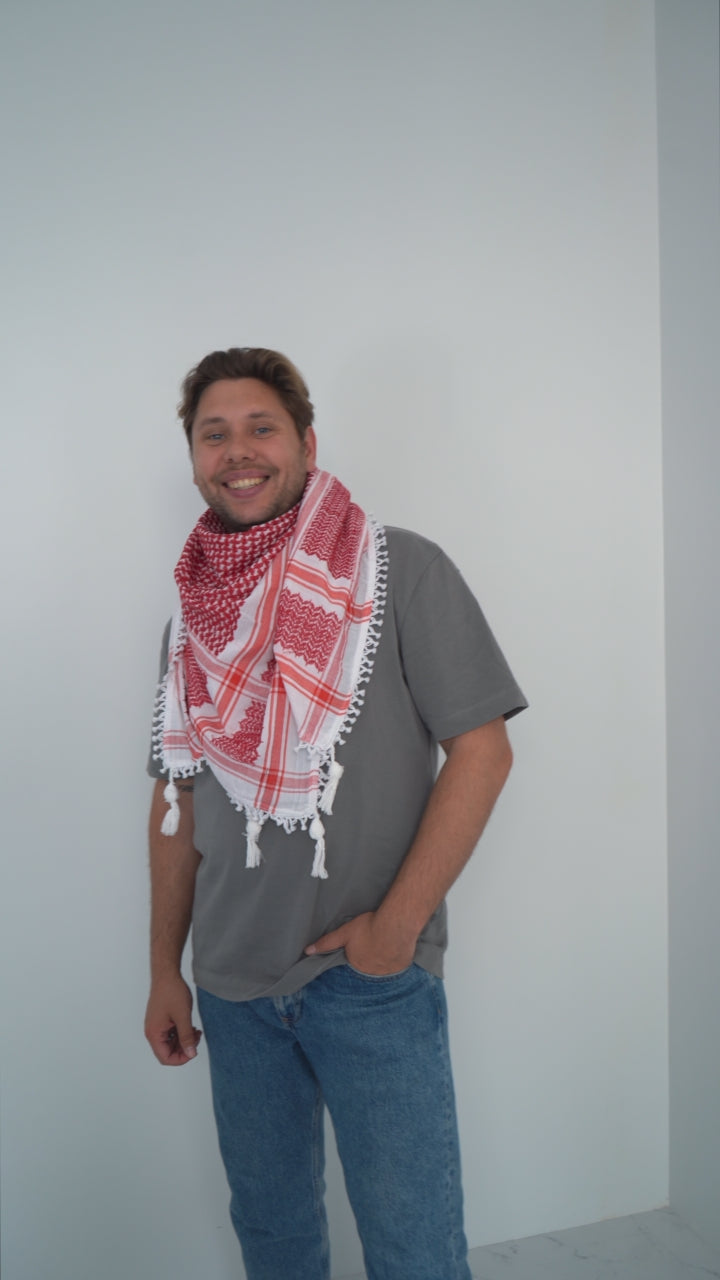
The History and Significance of the Hirbawi Black and White Kufiya
The Kufiya as a Symbol of Livelihood
In Palestinian culture, the kufiya is designed to resemble a fishnet, symbolizing the livelihood of the Palestinian people. Historically, fishing was a crucial aspect of the Palestinian economy. However, it has declined significantly in recent years due to "increased security measures" by neighboring states.

Representing Ancient Trade Routes
The lines cutting through the fishnet design represent the three trade routes that pass through Palestine. These routes have been in use since the times of the Old Testament, making them a significant part of the nation's history.

Emblem of Resilience
Finally, the olive leaves on the kufiya symbolize the strength and resilience of the Palestinian people. Olive trees have economic and cultural significance in Palestine, as they are resistant to drought and grow in poor soil conditions. The depiction of olive leaves on the kufiya serves as a reminder of the resilience of the Palestinian people.

The Hirbawi Black and White keffiyeh is just one example of the many kufiyas that feature these symbolic elements. Whether all three elements are included or only two, each kufiya serves as a symbol of the rich history and culture of Palestine.
In conclusion, the Hirbawi Black and White kufiya is much more than a simple headscarf. It represents the livelihood, trade, and resilience of the Palestinian people, making it a significant part of their cultural heritage.
Let customers speak for us
from 2426 reviewsThank you very much!

I have had this one for 12 years now, It was a gift from some very special people. It has traveled around the US and been to more protest and actions that I can count. This thing has been put through the ultimate test for sure. It might not prevent tear gas irritation, but this one has a much thicker weave and it provides enough relief and breathing cover to get you out of danger before its a problem. Ive got a nice burn hole from a flash bang but it never spread and ran past the initial hole. This thing has served me well and is ready to retire, waiting on that next drop for sure. I have snagged it on so much, been beaten up you name it so its got some loose threads and rough spots. I was wondering if there was a way to get it repaired before I hang it up some where adn would love to have it restored to its full glory, is there such a service that you offer?

Such beautiful work and such pretty designs

I have been trying for over a year to be able to purchase a Hirbawi Kufiya. I never seemed to see the email when they had them available. Finally, I have my scarf and I love it! Well, made attention to detail and best of all made in Hebron in the West Bank of Palestine. This is my small part in trying to support the people of Palestine. Thank you Hirbawi!

Feels sacred for having made it out of the West Bank!

The ordering was easy, it arrived promptly, and it is beautiful.

Beautiful, high quality, great customer service!!! Thank You!

This is so well made along woth the shipping was really fast

very happy with this purchase. free palestine 🇵🇸

I waited months to order one and will be ordering another one as this one is all white and I’m a little scared to stain it. It is beautiful and the details are so hice. I like that iris light weight. Regardless of how long it took me to be able to order with was understandable once I placed the order it shipped fairly quickly.

Loved this kufiya while I had it. Wore it during Global March to Gaza, and was dragged out of the sit in when they grabbed my kufiya and dragged me to the parking lot. I gave it to a friend in London on my trip home.
Passing on the love and the struggle.
FREE FALASTEEN🇵🇸✊🏽

Hirbawi kufiyas you might like
Hirbawi Original
44 products
Support
Search
Return Policy
Refund Policy
Shipping Policy
Payment Policy
Disclaimer
Privacy Policy
Terms of Service
Contact Us
About Us












Leave a comment: